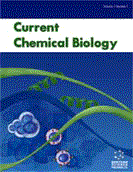Abstract
1R,25-Dihydroxyvitamin D3, the hormonally active form of vitamin D3, besides regulating the homeostasis of calcium and classical bone mineralization, also promotes cellular differentiation and induces some biological functions related to the immunological system. Extensive structure-function studies have shown that it is possible to modify the calcitriol structure to obtain vitamin D3 analogs that are capable of inducing, in a selective manner, the biological functions related to the same hormone. In this article, we revised QSAR studies with conceptual parameters such as flexibility of rotation, probability of availability, etc. we then used the method of regression analysis and QSAR studies in order to understand the essential structural requirement for binding with receptor. Next, we reviewed Radial Distribution Function, 4DQSAR, CoMFA and Docking with different compounds to find out the structural requirements for GSK-3 inhibitory activity.
Keywords: QSAR, COMFA, docking, vitamin D3, calcitriol, Drosophila melanogaster, Nuclear Receptor, DNA Binding Receptor, trans-amide bond., metabolic stability, Radial Distribution Function, Multiple Linear Regression, Genetic Algorithm, TR1 ligands
Current Bioinformatics
Title: Trends in Bioinformatics and Chemoinformatics of Vitamin D Analogs and Their Protein Targets
Volume: 6 Issue: 1
Author(s): Isela García, Yagamare Fall and Generosa Gomez
Affiliation:
Keywords: QSAR, COMFA, docking, vitamin D3, calcitriol, Drosophila melanogaster, Nuclear Receptor, DNA Binding Receptor, trans-amide bond., metabolic stability, Radial Distribution Function, Multiple Linear Regression, Genetic Algorithm, TR1 ligands
Abstract: 1R,25-Dihydroxyvitamin D3, the hormonally active form of vitamin D3, besides regulating the homeostasis of calcium and classical bone mineralization, also promotes cellular differentiation and induces some biological functions related to the immunological system. Extensive structure-function studies have shown that it is possible to modify the calcitriol structure to obtain vitamin D3 analogs that are capable of inducing, in a selective manner, the biological functions related to the same hormone. In this article, we revised QSAR studies with conceptual parameters such as flexibility of rotation, probability of availability, etc. we then used the method of regression analysis and QSAR studies in order to understand the essential structural requirement for binding with receptor. Next, we reviewed Radial Distribution Function, 4DQSAR, CoMFA and Docking with different compounds to find out the structural requirements for GSK-3 inhibitory activity.
Export Options
About this article
Cite this article as:
García Isela, Fall Yagamare and Gomez Generosa, Trends in Bioinformatics and Chemoinformatics of Vitamin D Analogs and Their Protein Targets, Current Bioinformatics 2011; 6 (1) . https://dx.doi.org/10.2174/157489311795222383
| DOI https://dx.doi.org/10.2174/157489311795222383 |
Print ISSN 1574-8936 |
| Publisher Name Bentham Science Publisher |
Online ISSN 2212-392X |
 21
21
- Author Guidelines
- Graphical Abstracts
- Fabricating and Stating False Information
- Research Misconduct
- Post Publication Discussions and Corrections
- Publishing Ethics and Rectitude
- Increase Visibility of Your Article
- Archiving Policies
- Peer Review Workflow
- Order Your Article Before Print
- Promote Your Article
- Manuscript Transfer Facility
- Editorial Policies
- Allegations from Whistleblowers
Related Articles
-
The Role of EC-IC Bypass in Critical Cerebral Hemodynamics of Different Origin
Current Hypertension Reviews Beta-blockers in the Perioperative Period: Are there Indications other than Prevention of Cardiac Ischemia?
Current Drug Targets Anti-Hypertensive
Current Bioactive Compounds Raman Spectroscopy-based Metabonomics of HIV-infected Sera Detects Amino Acid and Glutathione Changes
Current Metabolomics Pharmacological Treatment of Cannabis-Related Disorders: A Narrative Review
Current Pharmaceutical Design The Fetal Cardiac Function
Current Cardiology Reviews Polydeoxyribonucleotide (PDRN): A Safe Approach to Induce Therapeutic Angiogenesis in Peripheral Artery Occlusive Disease and in Diabetic Foot Ulcers
Cardiovascular & Hematological Agents in Medicinal Chemistry Low Molecular Weight Compounds with Transition Metals as Free Radical Scavengers and Novel Therapeutic Agents
Cardiovascular & Hematological Agents in Medicinal Chemistry Anti-Chlamydophila pneumoniae Antibodies as Associated Factor for Carotid Atherosclerosis in Patients with AIDS
Current HIV Research Effectiveness of Long-Term Macrolide Therapy in Cryptogenic Organising Pneumonia
Current Respiratory Medicine Reviews Endothelin and Subarachnoid Hemorrhage-Induced Cerebral Vasospasm: Pathogenesis and Treatment
Current Medicinal Chemistry Non-Communicable Diseases and Adherence to Mediterranean Diet
Endocrine, Metabolic & Immune Disorders - Drug Targets Molecular and Biological Functions of Melatonin in Endometrial Cancer
Current Drug Targets Human Urotensin II Promotes Hypertension and Atherosclerotic Cardiovascular Diseases
Current Medicinal Chemistry Possible Pathways of Hepatotoxicity Caused by Chemical Agents
Current Drug Metabolism Optimal Management of Hypertension in patients with Ischemic Heart Disease
Cardiovascular & Hematological Agents in Medicinal Chemistry Omega-3 Fatty Acids: from Biochemistry to their Clinical Use in the Prevention of Cardiovascular Disease
Recent Patents on Cardiovascular Drug Discovery Antineutrophil Cytoplasmic Antibody in Lupus Nephritis: Correlation with Clinicopathological Characteristics and Disease Activity
Current Rheumatology Reviews Inflammatory Cytokines and Atherosclerosis Possible Application for the Gene Therapy
Vascular Disease Prevention (Discontinued) Passive Smoking, Endothelial Dysfunction and Related Markers in Healthy Individuals: An Update
Current Hypertension Reviews


























